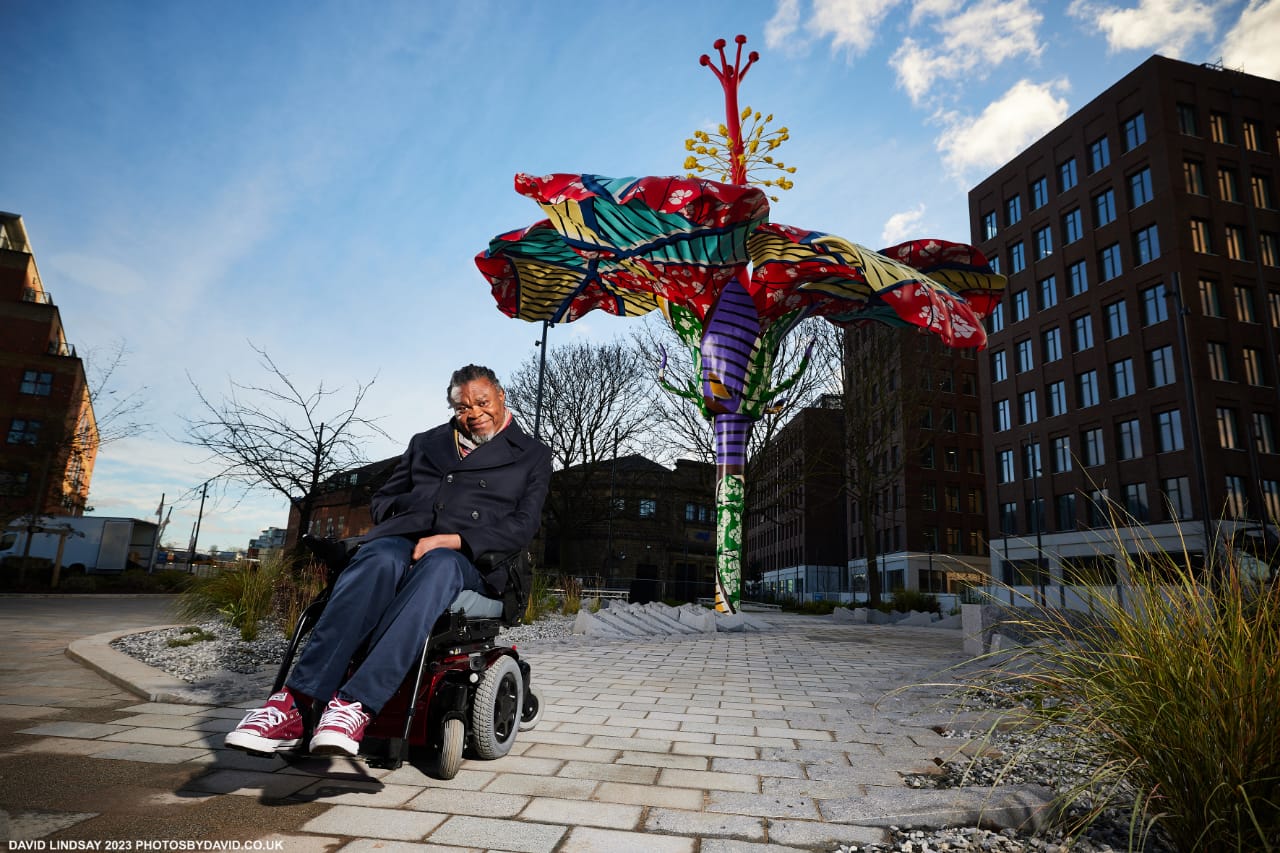Themes of cultural identity, memory, and history appear frequently in contemporary art, and artists such as Peter Doig and Yinka Shonibare are addressing them in different ways. Both artists explore their development and representation of identity and memory in great detail, despite the differences in their methods. The spectacular Peter Doig paintings and Shonibare’s multidisciplinary approach explore the complex connections between place, history, and identity, making their work essential for understanding contemporary art.
Yinka Shonibare Paintings: The Art of Cultural Hybridization
Yinka Shonibare, a British-Nigerian artist, is well-known for his works that explore postcolonialism, colonialism’s legacy, and the relationships between race, class, and identity. Politics, history, and aesthetics are all integrated in Shonibare’s artwork. The complicated relationship between Africa and Europe is portrayed by Dutch wax-printed cloth, which is frequently used. This fabric has African cultural roots, but its origins are in colonial trade networks. Shonibare combines these resources to produce visually captivating historically significant, and deeply referenced parts.
Exploring the Victorian era, a time when the British Empire was at its height and its ambitions for colonialism, is a key subject in Shonibare’s work. In his installations, pictures, and sculptures, Shonibare reimagines iconic figures from this era; often, he dresses them in vivid Dutch wax fabric, which is used to create traditional Victorian clothing. These figures are frequently headless, a choice that strips them of individuality and humanizes them as symbols of power, privilege, and exploitation. “The Swing (after Fragonard)” and “Nelson’s Ship in a Bottle” are two examples of Shonibare’s use of historical references to critique the legacy of imperialism and its ongoing effects on modern society. By removing the heads of his figures, Shonibare encourages viewers to reconsider traditional narratives of authority and the historical context behind them.
Viewers are invited to interact with the narratives presented in Shonibare’s immersive and dramatic installations. For instance, his work “Gallantry and Criminal Conversation” includes life-sized mannequins dancing in the manner of the eighteenth century, dressed in the characteristic Dutch wax fabric. This piece highlights the paradoxes between the brutal realities of colonization and European notions of refinement. Shonibare challenges the viewers to think critically about the generally accepted historical narratives and to recognize the ways in which the past continues to influence our current perception of cultural identity by recontextualizing historical events and identities.
Peter Doig Paintings: The Power of Memory
Unlike Shonibare’s politically motivated pieces, Peter Doig’s paintings get praise for their strange nature, which evokes feelings of mystery, stress, and nostalgia. Doig’s background in Canada and Scottish origins shaped his unique painting style. His paintings frequently include landscapes that are both familiar and strange, influenced by his travels to different places including Trinidad, London, and Canada. Doig captures the spirit of a place, allowing viewers to project their own memories and feelings onto the scenes.
Peter Doig’s paintings create an atmosphere where objects and people emerge from misty, strange settings. His use of light and color gives viewers a nearly cinematic experience. Works like “Canoe-Lake” and “The House of Pictures” are prime examples of Doig’s skill in evoking feelings of thinking and desire through his use of muted tones and enigmatic subjects. These open-ended scenarios encourage viewers to interact with the paintings, reflecting their own experiences and memories.
Doig’s art moslty relies on memory since he frequently takes inspirations from both the collective memory of a place and his own memories. His paintings capture moments that appear to exist in a region between the past and present, giving them a sense of time passing. Doig’s paintings are strong because of their historical ambiguity, which encourages viewers to think about the ways in which memory warps and reshapes our understanding of reality. For example, Doig evokes a sense of melancholy and loneliness in the spooky scene “Gasthof zur Muldentalsperre,” where a lone figure stands in front of a snowy forest.
Exploring Identity and Place
Though Yinka Shonibare and Peter Doig employ distinct artistic methods, themes of identity, memory, and place are central to both of their works. Shonibare captures attention through historical references and material culture, challenging how politics and history shape cultural identity. Similarly, Peter Doig’s paintings delve into the relationship between memory and place, portraying landscapes that merge reality with imagination. By encouraging viewers to reflect on their own perceptions of time and space, both artists create connections in their work that transcend the specific details of their depicted scenes.
Contemporary art can address deep subjects of memory, history, and identity, as shown by the works of Yinka Shonibare and Peter Doig. Both artists encourage viewers to interact with these subjects more deeply by using their distinctive styles, which inspires thought and discussion. They are contemporary artists who keep pushing the limits of their respective mediums and providing new perspectives on the world we live in.


